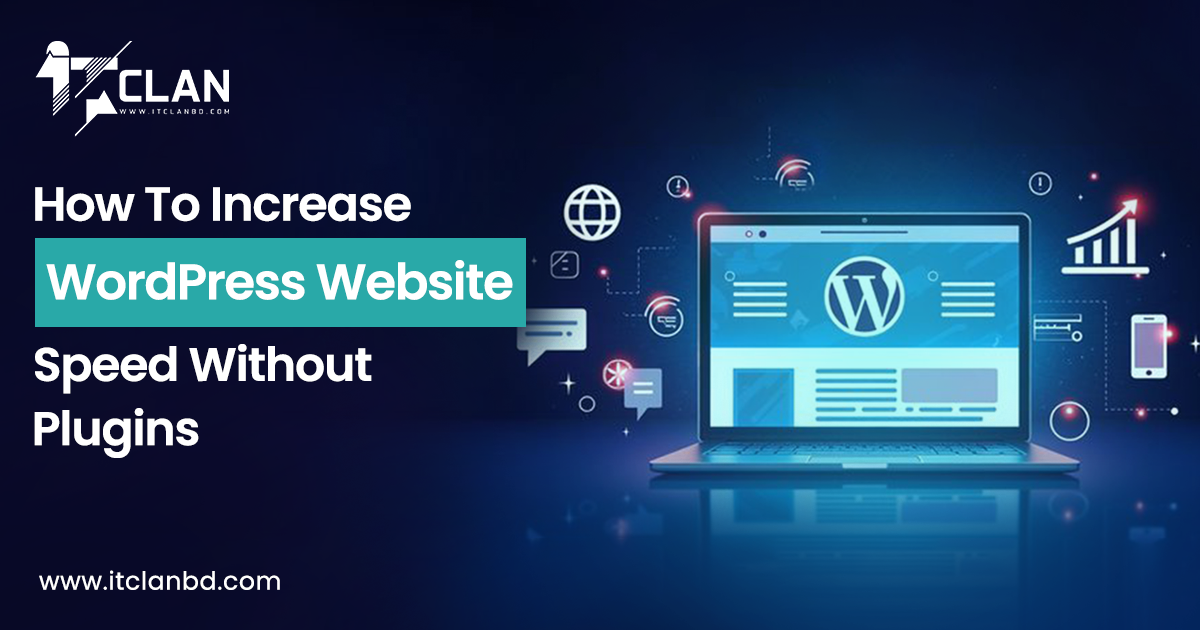
Our Blog Details
Home / Our Blog DetailsEver visited a website on your phone and had to zoom in just to read a sentence? That’s what happens when a site isn’t responsive. In today’s mobile-first world, users expect websites to look and work perfectly on every device, whether it’s a desktop, tablet, or smartphone. That’s where you will need Bootstrap. It’s one of the most powerful tools out there for making responsive websites.
So, let’s dive into how Bootstrap handles responsive design and why it might just be the tool your website needs.
What is Bootstrap & Why Do You Need It?
Bootstrap is a popular open-source front-end framework developed by Twitter. It provides a collection of HTML, CSS, and JavaScript tools for creating modern, responsive websites quickly.
Why you need Bootstrap:
- It saves development time.
- It’s mobile-first by default.
- It includes pre-built components like buttons, forms, navbars, and more.
- It ensures consistency across browsers and devices.
If you’re a beginner or a seasoned developer, Bootstrap helps you building sleek and functional websites way easier. Want to know more about the tools developers love? Explore our blog on the best frontend frameworks to discover how Bootstrap stands alongside other powerful tools.
What is Responsive Design & Why it Matters?
Responsive design means that your website automatically adjusts its layout and content based on the screen size and device type. It ensures your site looks great on everything from an iPhone to a 32-inch monitor.
Why does it matter:
- Over 50% of web traffic comes from mobile devices.
- Google prioritizes mobile-friendly websites in search results.
- A responsive website gives users a better experience and reduces bounce rates.
In short, responsive design is no longer optional—it’s essential. Without responsive design, websites can feel clunky, requiring excessive zooming or scrolling, which drives users away. That’s why Bootstrap, with its built-in responsive features, has become a favorite among developers looking to save time while delivering polished, mobile-first designs.
What Makes a Website Responsive?
Several elements contribute to a responsive website:
- Fluid grids: Layouts based on relative units like percentages instead of fixed pixels.
- Flexible images: Images that scale within their containers.
- Media queries: CSS rules that apply styles based on device characteristics (like screen width).
- Mobile-first design: Designing for smaller screens first, then enhancing for larger ones.
Bootstrap brings all of these features together—prepackaged and ready to use.
Bootstrap’s Core Responsive Features
Bootstrap provides a robust set of tools to streamline responsive design. Below are its key features:
1. Grid System
Bootstrap’s 12-column grid system is the backbone of its responsive design capabilities. Built with flexbox, it allows developers to create flexible, dynamic layouts. The grid uses predefined breakpoints to adapt to various screen sizes:
- xs (<576px): Extra small devices
- sm (≥576px): Small devices
- md (≥768px): Medium devices
- lg (≥992px): Large devices
- xl (≥1200px): Extra-large devices
- xxl (≥1400px): Extra-extra-large devices
For example, a column class like .col-md-6 takes up half the width on medium screens and above, stacking vertically on smaller screens.
2. Responsive Utilities
Bootstrap offers utility classes to control visibility, spacing, and alignment:
- Visibility Classes: Control when elements appear or disappear (e.g., .d-none .d-md-block hides an element on small screens but shows it on medium and larger screens).
- Spacing Utilities: Responsive padding and margin classes (e.g., .pt-md-4 for padding-top on medium screens).
- Flexbox Utilities: Classes like .flex-md-row or .order-md-1 adjust flexbox layouts based on breakpoints.
3. Responsive Typography and Components
Bootstrap uses rem and vw units for fluid typography that scales with viewport size. Its components, like navbars, modals, and carousels, are inherently responsive. For instance:
- The .img-fluid class ensures images scale proportionally.
- Navbars collapse into a hamburger menu on smaller screens.
Looking to optimize other UI/UX components? Check our article on best tools for UI/UX designers to enhance your design approach.
How Bootstrap Implement Responsive Design?
Bootstrap’s responsive design is powered by a combination of techniques:
1. Media Queries
Bootstrap uses CSS media queries to apply styles at specific breakpoints. For example, its source code includes queries like:
CSS
@media (min-width: 768px) {
.col-md-6 {
flex: 0 0 auto;
width: 50%;
}
}
This ensures layouts adjust dynamically based on screen width.
2. Mobile-First Approach
Bootstrap adopts a mobile-first philosophy, where base styles are written for smaller screens, and additional styles are progressively applied for larger screens using min-width media queries. This approach optimizes performance and ensures a solid foundation for mobile devices.
3. Predefined Classes for Responsiveness
Bootstrap’s class naming convention makes responsive design intuitive. For example:
- .col-sm-6 .col-lg-4 creates a column that takes 50% width on small screens and 33.33% on large screens.
- .offset-md-2 adds a two-column offset on medium screens and above. Combining these classes allows developers to craft complex, responsive layouts with minimal code.
4. Customization with Sass Variables
Bootstrap’s Sass-based architecture lets developers customize breakpoints, grid behavior, and utilities. For instance, modifying $grid-breakpoints in the _variables.scss file adjusts the default screen sizes:
SCSS
$grid-breakpoints: (
xs: 0,
sm: 576px,
md: 768px,
lg: 992px,
xl: 1200px,
xxl: 1400px
);
This flexibility ensures Bootstrap can adapt to project-specific needs. For scalable solutions, also check out our guide on web development for business growth.
Best Practices for Using Bootstrap Responsive
When incorporating Bootstrap into your web development workflow, following these best practices can help you build efficient, responsive, and user-friendly websites:
- Master the Grid System: Take full advantage of Bootstrap’s 12-column grid to build flexible layouts. Use proper column balancing and nesting to maintain visual consistency across devices.
- Design Mobile-First: Start designing for small screens and progressively enhance for larger ones. This mobile-first approach improves performance and ensures better usability on all devices.
- Use Responsive Utility Classes Wisely: Apply Bootstrap’s utility classes (like .d-none, .d-md-block, etc.) to control element visibility across screen sizes. This keeps your layout clean and content relevant to the user’s device.
- Optimize Images and Media: Make images responsive with the .img-fluid class and use the srcset attribute to serve appropriate image resolutions. This enhances both loading speed and display quality.
- Customize Bootstrap Thoughtfully: Modify SASS variables and add custom styles to align with your brand while preserving the responsive framework. Avoid overwriting core styles unless necessary.
- Test on Real Devices and Browsers: Don’t rely solely on browser dev tools—test your site on actual smartphones, tablets, and desktops to catch layout or interaction issues that might be missed otherwise.
Want more performance tips? Our website maintenance blog covers how to keep your site running smoothly across devices.
Example: A Simple Responsive Layout
Here’s a basic layout using Bootstrap’s grid system:
html
<div class=”container”>
<div class=”row”>
<div class=”col-12 col-lg-8″>
<h2>Main Content</h2>
</div>
<div class=”col-12 col-lg-4″>
<h2>Sidebar</h2>
</div>
</div>
</div>
- On mobile: Main content and sidebar stack
- On desktop: Main content and sidebar sit side by side
Benefits of Using Bootstrap for Responsive Design
- Faster Design Workflow: Bootstrap’s pre-built responsive grid system helps developers quickly create layouts that adapt to any screen size, minimizing the need for custom CSS and speeding up development.
- Robust Component Library: It offers a wide variety of responsive components like navigation bars, modals, and forms. It integrates smoothly and allows developers to build advanced features with ease.
- Improved User Experience: With responsive utility classes, developers can control the visibility of elements based on screen size, creating cleaner interfaces and better navigation across devices.
- Consistent Look Across Devices: Bootstrap ensures that components behave uniformly on different platforms, delivering a cohesive and professional appearance that enhances user trust and satisfaction.
- Easy Customization: Developers can tailor Bootstrap to their project’s needs by customizing styles, components, and grid layouts, while still maintaining full responsiveness.
- Strong Community and Documentation: With detailed documentation and an active global community, Bootstrap provides excellent support and resources for developers at all levels.
If you’re managing products or services online, pair Bootstrap with our best inventory management solutions to streamline your workflow.
Choose ITclan BD for Your Website’s Responsive Design
Worried about your website? Well, you can make your website responsive within your fingertips. Just click on ITclan BD! They craft responsive, high-performing websites that adapt beautifully to all screen sizes. Whether you need a new site or want to revamp your current one, our expert developers use Bootstrap and other modern technologies to deliver results that meet your goals.
Conclusion
Responsive design isn’t just a trend—it’s a necessity. With Bootstrap, creating mobile-first, fast-loading, and beautiful websites is more accessible than ever. From its powerful grid system to its handy utility classes, Bootstrap offers everything you need to build a site that works flawlessly on any device.
So if you’re planning to build or redesign your website, Bootstrap is a smart choice. And if you want it done right, let ITclan BD help you create a site that’s not just responsive, but remarkable.
Want to stay ahead in web design and development? Visit our full blog library for more insights and expert tips.
Frequently Asked Questions
Bootstrap uses a mobile-first grid system, responsive utility classes, and flexible components to automatically adjust your website’s layout across different screen sizes.
We use a mobile-first approach with Bootstrap’s grid system, media queries, and responsive components to ensure your website looks great on all devices.
The main advantage of Bootstrap is its ready-to-use responsive grid system and components, which speed up development and ensure your website looks consistent across all devices and browsers.
Not necessarily. With basic HTML and CSS knowledge, you can use Bootstrap to create functional layouts. For more advanced features, some JavaScript knowledge helps.
Use Bootstrap’s grid system and responsive utility classes like .row, .col-md-*, and .form-control to structure the form. This ensures it adjusts automatically to different screen sizes.
Recent Blog Post
Quality Is Our Strength

How To Increase WordPress Website Speed Without Plugin...
Is your website feeling a bit sluggish? Slow load times can frustrate visitors, hurt your SEO rankings, and even lower your conversions. But don’t worry—you don’t need a bunch of plug...

Creating a Seamless User Journey Through Effective UI/UX Des...
Hello! Have you ever clicked on a website and felt frustrated because you couldn’t find what you needed? Or maybe you’ve used an app that felt so smooth, you didn’t even notice how ea...

How SEO and Digital Marketing Work Together to Drive Online ...
Are you wondering how to make your website pop up on Google’s first page and get more people clicking, engaging, and buying? You’re in the right place! Today, we’re diving into how SE...

